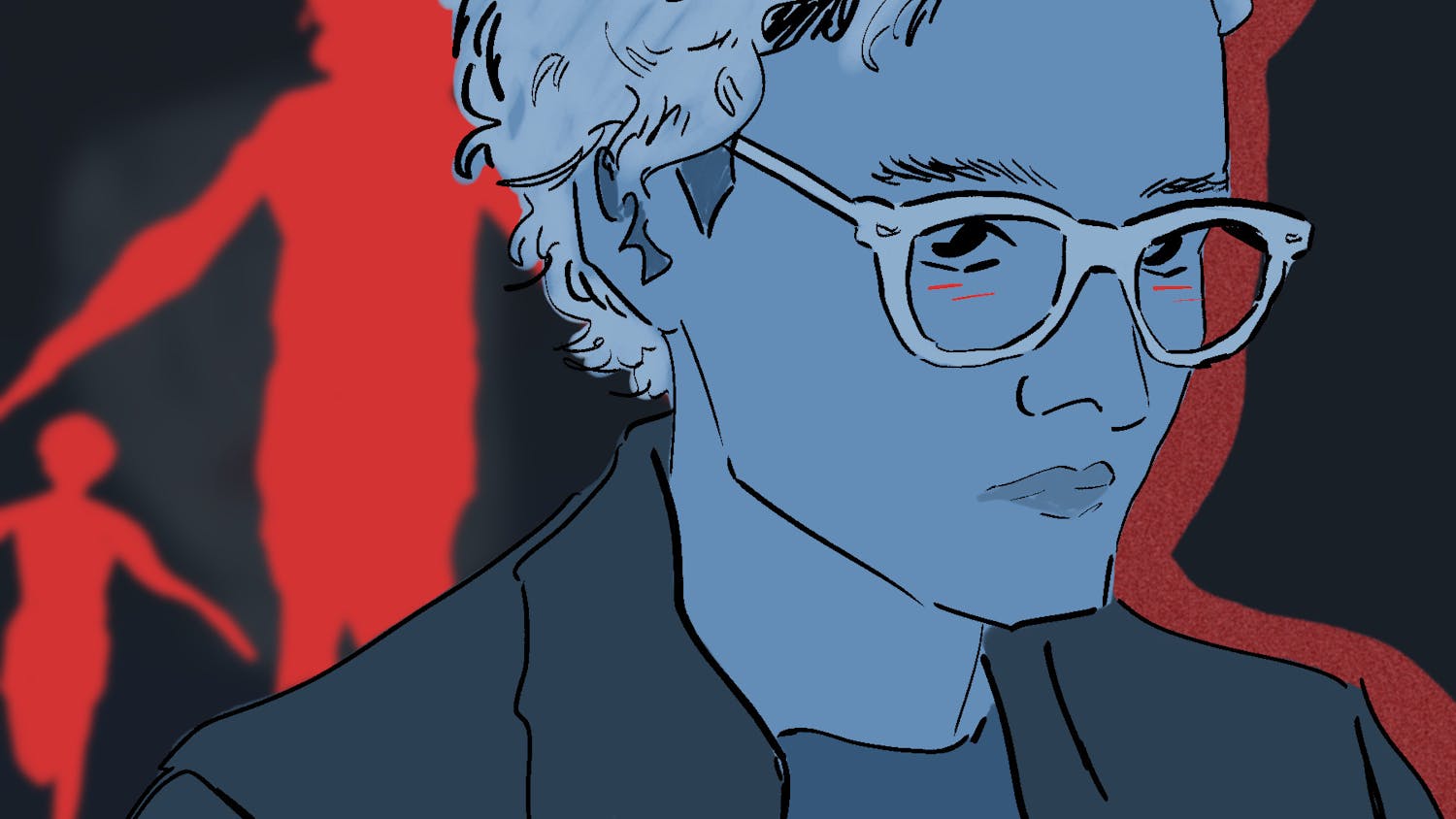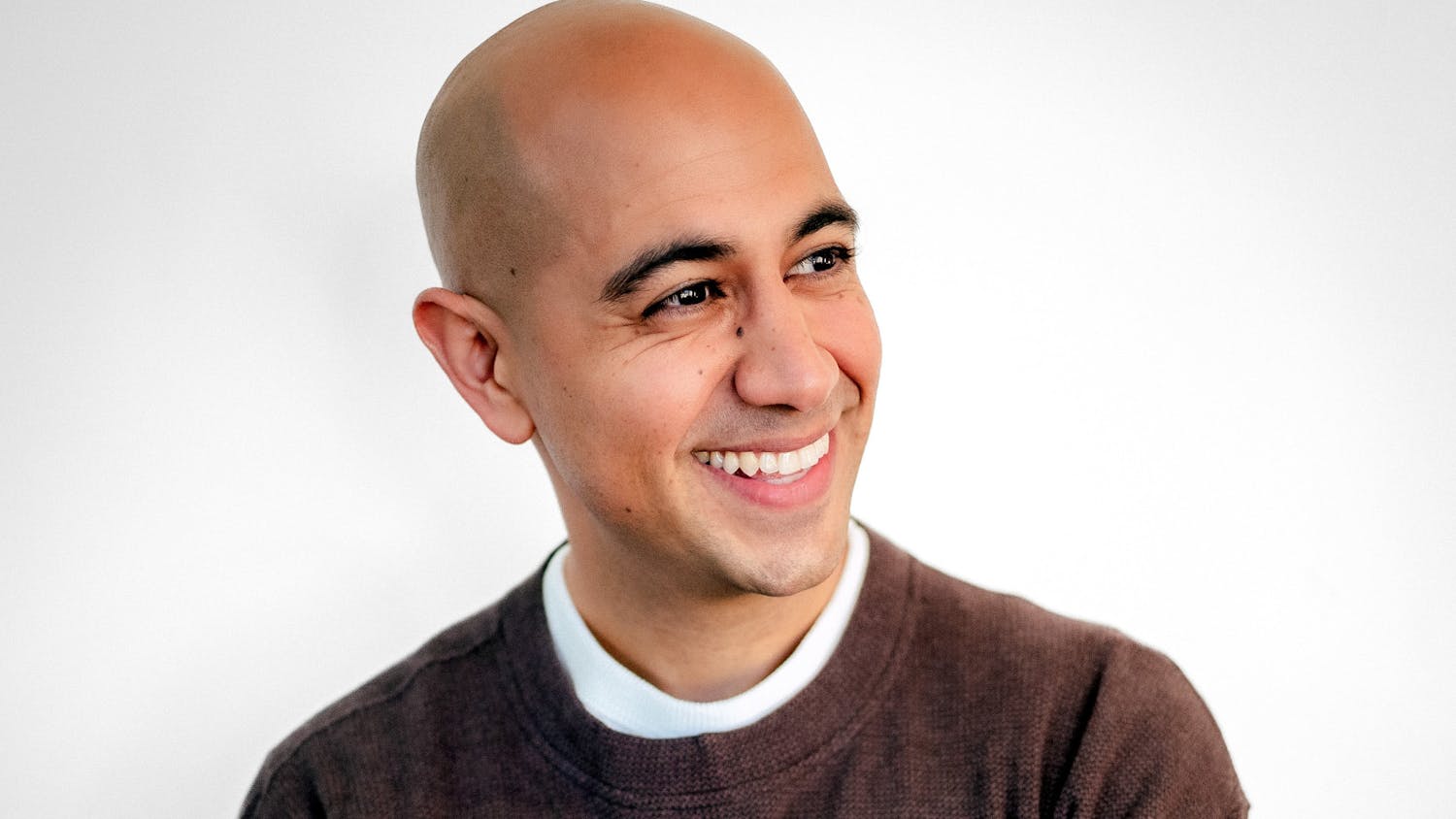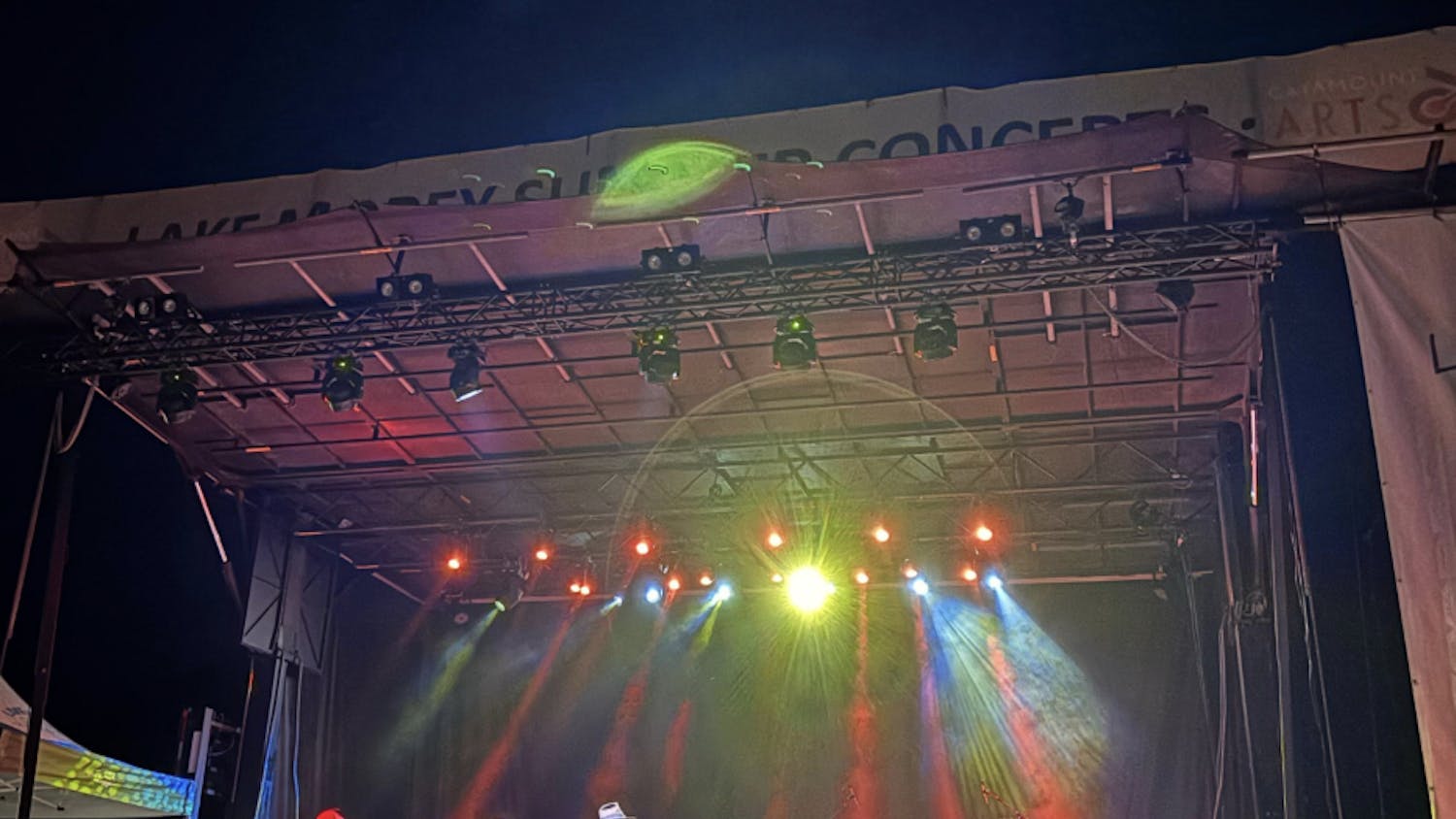When she bends, you think, "How deep can deep be?" "Her arms curve like ancient tree branches; her back melts into that sinuous posture;" she is "possessed by do-or-die flamenco passion." These are all comments -- in the Village Voice, the San Fransisco Examiner and the New York Times, respectively -- on Soledad Barrio, the premiere female flamenco dancer of Noche Flamenca. The dance troupe that made the Moore Theatre seem not only intimate but also hot these past Friday and Saturday evenings.
Barrio's dance, the solea, was not a somber reflection on solace, but a struggle expressed sharply, passionately, even lovingly. Her eyes and quick turn of the head quickly forewarned her movements, creating a brutal fluidity of body where every movement made fast or delicately slow was an expression, a gift.
Her mind fused with the dance so any feeling conveyed was not purposeful but an expression extended. Her movements were another instrument. They went beyond the sound of her intricate pounded steps, or her clapping; her motions interacted with the singing and the guitars in conversation. At one point the song reached out to her, pleading almost at the edge of the spotlight, but Barrio -- though open completely in movement -- is fiercely independent. She reacted but received nothing; this is the solitude, undeniably, of the dance's name.
Noche Flamenca is the vision of Martin Santangelo, 38, who was born and raised in New York but made his way to Madrid in 1987 to study flamenco after filling in for a flamenco scene of a dancer who never arrived. After this chance reminder of his love of flamenco, which he grew up with in his home in Greenwich, Conn., he moved, married the flamenco dancer and present star of his company, Soledad Barrio. Santangelo founded Noche Flamenca in Madrid in 1993.
This show was not a flutter of frills and polka dots, lined eyes soldering a fan that coyly tried to hide them as the castanets clicked. The fast-paced glitter and rock and roll of modern flamenco fusion was not evident. The women and men dressed simply, according to "flamenco puro" in the tradition of the Andalucian gypsies. Barrio, in sometimes bright but always spare dresses, ruffled to kick with the movement, and Alejandro Granados, the simply dressed matador, both maintained the essence of the dress of flamenco.
Barrio was feminine, sensual and surprisingly hard, while Granados had purposeful machismo laced with moments of a waif-like twirling of hands. This is just one example of Santangelo's thorough understanding of flamenco. "We don't use tricks," he said in an interview with The New York Times, "You can borrow elements from other artistic languages, but you shouldn't try to speak [them]."
Andalucian flamenco is infused with history, especially the arrival of nomadic Gypsies in the 15th century. Felix Grande, historian of 15th, 16th and 17th century Andalucia, wrote: "The Jews were massacred, the Gypsies humiliated and persecuted, the Arabs exterminated, the Moriscos [converted Arabs] expelled, and the Andalucians generally exploited if we do not relate the music to brutality, repression, hunger, fear, menace, inferiority, resistance and secrecy, then we shall not find the reality of 'cante flamenco'it is a storm of exasperation and grief."
It is from this legacy that Santangelo pulls the music and the dance, which he directs and choreographs, yet he constantly reinvents the tradition by his extensive knowledge and juxtaposition of his sources.
The dances he pulls from are all traditional. The dances of Saturday's performance were the well-loved tango, the siguiriya and the solea. Siguiriya is also named "playeras," which stems from planidera, meaning "hired mourner."
The allusions to death probably refer to the mourner's wails, and the guitar accompaniment to the dance had moments that were notes tolling for the dead.
Granados' interpretation was conscious of the grave nature of the dance. He clicked for the audience but all too purposefully remained aloof, as if he were trying to prove his solitude. His taps and stomps asked the questions: the need or desire to expel something deep within, and the knowledge of that struggle, yet he was so aware of his acting that it lost effect.
Barrio was the opposite of this, deeply involved in her solace and joy.
Solea stems from a basic cante, of which there are three that inform flamenco. During the 19th century there were two types, the "cante gitano" of the gypsies and the "cante andaluz" of Andalucia. The "cante jondo" -- deep song -- reflects the mourning of the Sephardic Jews, and is informed by the searching and questioning in Arabic poetry. These three types of song became dance slowly. In the 1840s, all of the themes -- North African trance rhythms, the repetition of Islamic prayer and the searching in the Jewish music -- came together in what is known today as flamenco. The solea is the ultimate form of the cante flamenco.
This production was not just the dancers, which flamenco seems to be most known for. The technical skill of the guitarists, Jesus Torres and Miguel Perez, matched the vibrant voices of singers Manuel Gago and Antonio Vizarraga. Their fingers spidered over the strings and seemed to flawlessly interact and react to the voices and the other instruments of hands and feet. Torres and Perez played the notes so clearly that the rhythms became a lilting trance.
The troupe is just that, a troupe: every member an essential component. Yet every critic and audience of "Noche Flamenca" is startled by Soledad Barrio, who is called by the San Fransisco Examiner the "company's absoluta, an embodiment of the fierce charisma that belongs to the greatest flamenco artists. Her trajectory is grave; her feet seem to carve patterns in the stage. She seems possessed."
It is she who seems to encapsulate Santangelo's vision of a reinvigorated flamenco saturated in and reminiscent of the history of loss that formed it.
Noche flamenca brought to Spaulding an art of such skill and power that few escaped its hypnotic grasp. The music and movement of the company brought not just a dance or a song to its audience but a glimpse of a culture deeply inbedded in its tragic past and the rememberance of it. It seems that perhaps Flamenco spoke more truth than any formal history ever could.



